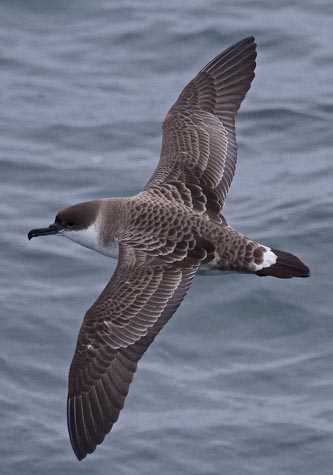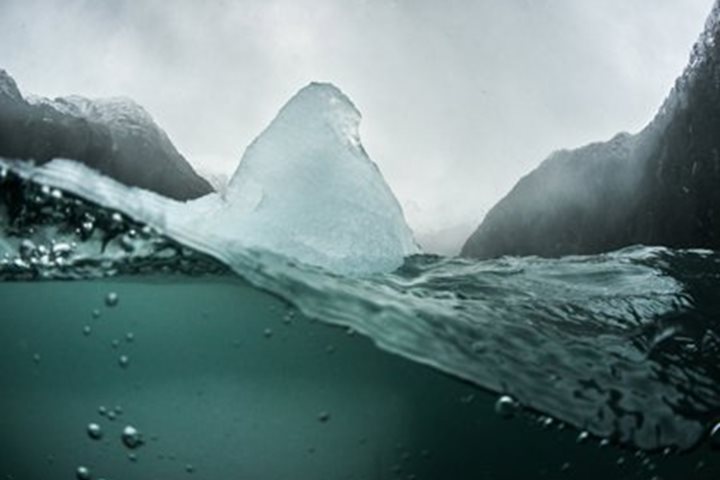Days at sea allow one to catch up on life and reflect on where one is and what one has recently done. It is also a time to rejuvenate one’s self from travel days. In this part of the world, traveling southward off Argentina, there is plenty to see outside.
All day we traveled over the Patagonia Shelf, an extremely productive marine area. This large (2.7 million sq. km) shallow region of Uruguay and Argentina has been identified as a Large Marine Ecosystem (LME) of world importance. The warm Brazilian Current flowing from the north meets the cold Malvinas Current from south resulting in conditions favorable to plankton production, which create food for large fish populations and other marine organisms, some of which are commercially important and exploited. We saw the results of this high productivity in the number of seabirds that constantly glided by the ship throughout the day.
Several species of tubenose seabirds (albatross, shearwaters, and storm petrels) were in abundance. Sometimes even mixed groups of many dozens were resting on the water in the relatively calm winds. Most of this group of birds prefer to fly during windy conditions. They use their long wings to just glide back and forth over the waves in search of food. Greater shearwaters were always in view somewhere around the ship. These birds have an amazing migration covering much of the Atlantic Ocean. The entire population breeds on four islands of the south Atlantic, possibly four million birds. After the reproductive period they move northward all the way to the waters off eastern Greenland utilizing the abundance of zooplankton and fish there in the long arctic summer. Then returning southward across the Atlantic again to breed. Non-breeding and young birds were probably what we saw mostly as adults should be already nesting.
On the National Geographic Explorer days at sea are also a time to learn. Everyone onboard has come to not only experience a particular piece of our world but also to be enlightened about various aspects of a location different from where we live. Today we had a series of presentations relevant to our days ahead in Patagonia. First Ian Bullock focused on the Magellanic penguin lifecycle as Patagonia is the main breeding area for this species. Then David Barnes talked about possibly the most significant visitor to Patagonia in the 19th century - Charles Darwin. Later, after dinner, David introduced a very well produced film re-enacting some of Darwin’s life. The last presentation of the afternoon was Gabriela Roldan introducing us to Argentina’s culture and people.
Not only a full day at sea but a full day of watching marine life, and a full day of learning about a fascinating part of the world - Patagonia.







